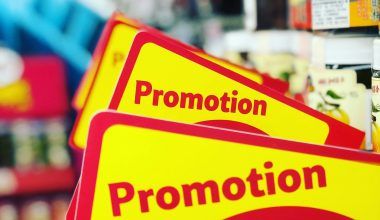Are you a musician or independent artist dreaming of sharing your music with the world? Getting your song on iTunes and other platforms is not as challenging as it might seem. In fact, with the right approach, you can Distribute your song on iTunes on multiple platforms. Whether you’re just starting out or you’ve been in the music scene for years, this guide will walk you through the process and offer tips to maximize your reach.
Why Distributing Your Song on iTunes Matters
iTunes, now part of Apple Music, is one of the most popular music platforms worldwide. It has millions of active users who are eager to discover fresh and original music. Distributing your song on iTunes gives you access to this massive audience. Not only that, but being present on such a credible platform also boosts your professional image. Plus, it’s not just about iTunes; by leveraging multiple distribution channels, you can reach listeners on Spotify, Amazon Music, YouTube Music, and many more.
Understanding Music Distribution
Before diving into the steps, let’s quickly clarify what music distribution means. Music distribution is the process of getting your songs to online platforms where listeners can stream, purchase, or download them. Distributors act as the middlemen between you and platforms like iTunes, Spotify, and others. The right distributor can help you get your music on multiple platforms efficiently.
Step 1: Create High-Quality Music
Before you distribute your song on iTunes or anywhere else, ensure it’s of high quality. Professional-quality music is crucial for making a lasting impression on listeners. Here are a few things to consider:
- Recording: Use a professional studio or high-quality home setup to record your song.
- Mixing and Mastering: Hire experienced audio engineers or use trusted software to ensure your track sounds polished.
- Format: Most platforms, including iTunes, require files in WAV or MP3 format, so prepare your tracks accordingly.
Step 2: Choose the Right Distributor
To distribute your song on iTunes and other platforms, you need a digital music distributor. Some popular options include:
- Delivermytune: A user-friendly platform that lets you distribute music on iTunes and other stores for a flat fee.
- CD Baby: Offers comprehensive distribution services, including iTunes, Spotify, and physical CD sales.
- DistroKid: Known for its affordability and ease of use, DistroKid is a favorite among independent artists.
- Amuse: A free option for artists on a budget, though it has fewer features compared to paid services.
When selecting a distributor, consider factors like cost, ease of use, and the platforms they distribute to. Some distributors also offer extra features like royalty tracking and marketing tools.
Step 3: Prepare Your Metadata
Metadata is the information that accompanies your song on platforms like iTunes. It includes:
- Song Title
- Artist Name
- Album Name
- Genre
- Release Date
Accurate metadata is essential because it helps listeners find your music. Double-check everything before submitting your song to avoid errors.
Step 4: Upload Your Song
Once your metadata is ready, upload your song to your chosen distributor. Follow these steps:
- Sign Up: Create an account with your distributor.
- Fill Out Details: Enter your metadata, upload album art, and choose your release date.
- Select Platforms: Most distributors let you choose where you want your music to appear, including iTunes and other platforms.
- Submit: Once everything looks good, hit the submit button.
Your distributor will handle the rest, ensuring your song reaches the platforms you selected.
Step 5: Promote Your Music
Getting your song on iTunes is just the first step. To gain listeners, you need to promote your music effectively. Here’s how:
- Social Media: Share links to your music on platforms like Instagram, Twitter, and Facebook.
- Email Marketing: Build an email list of fans and notify them when your song is available.
- Collaborations: Partner with other artists or influencers to reach new audiences.
- Live Performances: Use gigs and events to promote your music and direct fans to iTunes.
The Benefits of Distributing to Multiple Platforms
While iTunes is a great starting point, don’t limit yourself. By distributing your song to multiple platforms, you’ll:
- Increase Discoverability: Different platforms attract different audiences. Spotify users might not be on iTunes, and vice versa.
- Diversify Income: More platforms mean more streams, downloads, and purchases, which translates to higher earnings.
- Build a Global Presence: Many platforms cater to specific regions, so being on multiple platforms helps you reach international fans.
Monetizing Your Music
Apart from gaining exposure, distributing your song on iTunes and other platforms allows you to earn royalties. Here’s a quick breakdown:
- Streaming Royalties: Earn money every time someone streams your song.
- Download Sales: Get a percentage of the revenue when fans purchase your song on platforms like iTunes.
- Performance Royalties: If your song is played on the radio or used in public settings, you’re entitled to royalties.
Make sure you’re registered with a performing rights organization (PRO) like ASCAP or BMI to collect these earnings.
Overcoming Common Challenges
As exciting as it is to distribute your song on iTunes, you might face some challenges. Here’s how to handle them:
- Copyright Issues: Ensure you own the rights to your music or have the necessary permissions.
- Delays: Plan your release date well in advance to avoid unexpected delays.
- Competition: Stand out by creating unique, high-quality music and engaging with your audience.
Keeping Track of Your Success
Once your song is live, monitor its performance. Most distributors provide analytics that show:
- Streams and Downloads: Track how many people are listening to your song.
- Demographics: Learn about your audience’s age, location, and preferences.
- Revenue: See how much you’re earning from different platforms.
Use this data to refine your strategies and improve future releases.
Final Thoughts
Distributing your song on iTunes and other platforms is a crucial step in your music career. It’s your opportunity to share your passion with the world, grow your fan base, and make a living doing what you love. With the tips in this guide, you’re well on your way to making your music available to millions of listeners.
So, what are you waiting for? Take the leap, choose your distributor, and let the world hear your talent. Remember, every big artist started somewhere—and this could be your moment to shine.
Related Articles:
For further reading, explore these related articles:
- How to Release Your Remix on Apple Music as an Independent Artist
- How to Release Your Remix on Apple Music in 2025
For additional resources on music marketing and distribution, visit DMT RECORDS PRIVATE LIMITED.






